71-year-old Dan Droz began his new art career at the age of 69. This spring, his large-scale work titled “The Gathering,” a 12-foot-tall sculpture, will be unveiled in Pittsburgh. The work is intended to create a new gathering spot, while showcasing the power of sculpture to elevate a public space. His is a journey of taking a parallel path to his previous one, rather than a complete reinvention. His work has been included in numerous solo and juried exhibitions including the Westmoreland Museum of Art, the Pittsburgh International Airport, the Harrisburg Art Center and commissions for both commercial and private collections. Droz has been the recipient of many awards including the Mary Phillips Award for Sculpture from Seton Hill University, ID Magazine’s “Designer of Year” and “Best of America” by Abitare (Italy).
When did you begin your art career?
I’d been a “closet” sculptor for several years, making small pieces in my basement, but I had never exhibited or sold anything. In the spring of 2018, an artist friend of mine suggested that I show some of my work to a Pittsburgh gallery that represented her, to see if they’d be interested in displaying a few pieces. I dropped in one afternoon with some photos of my work and, after looking at them, the owner looked up and said, “If you can make 30 pieces like this in the next two months, I’d like to do a solo show of your work this year.” The show opened on November 30, 2018, and the gallery sold more than half of the sculptures that night. That’s when I decided to think about a career change.
What were you doing before?
I had been running a mid-size design and marketing firm and, for 18 years, also taught design at Carnegie Mellon University.
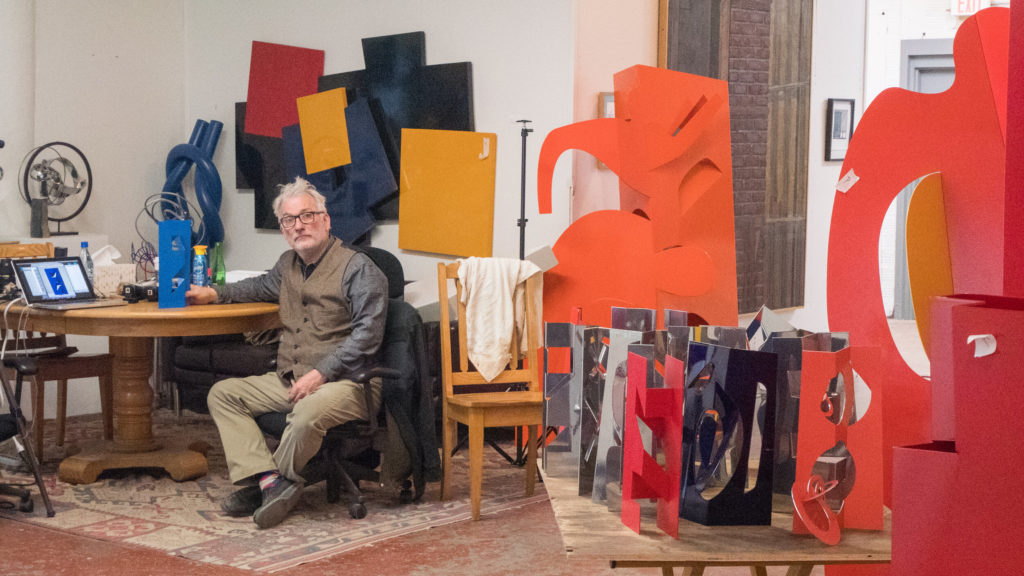
Why did you leave and pursue art?
I loved the design and marketing business, but it was changing dramatically toward online interaction, which wasn’t so interesting to me. I had achieved everything I’d hoped for in my design career and felt that a new challenge would be invigorating. Encouraged by the results of my first solo exhibition, I decided, on my 69th birthday (in August, 2019), to close my business and pursue sculpture full time.
Transitioning to a New Career
How did you transition from your previous career?
There were two overlapping stages in the transition: closing my business and starting the new venture. To close the business, I met with each of my clients to help them transition to a new firm that could assist them, then worked with each of my employees to ensure they had alternative employment. I then donated all the furniture and supplies that I wouldn’t need to a local charity.
In terms of the startup, apart from making art every day, I joined several artist groups to begin to understand the art world. Some were very general and others were specific to sculpture, fabrication or art marketing. I also had to find suppliers, fabricators, finishers, etc to assist with the production. This took several months of experimentation. Once I had a team of collaborators for production, I could begin marketing and because of my design background, was able to produce a variety of catalogs, programs, invitations, and media exposure for exhibitions to create awareness.
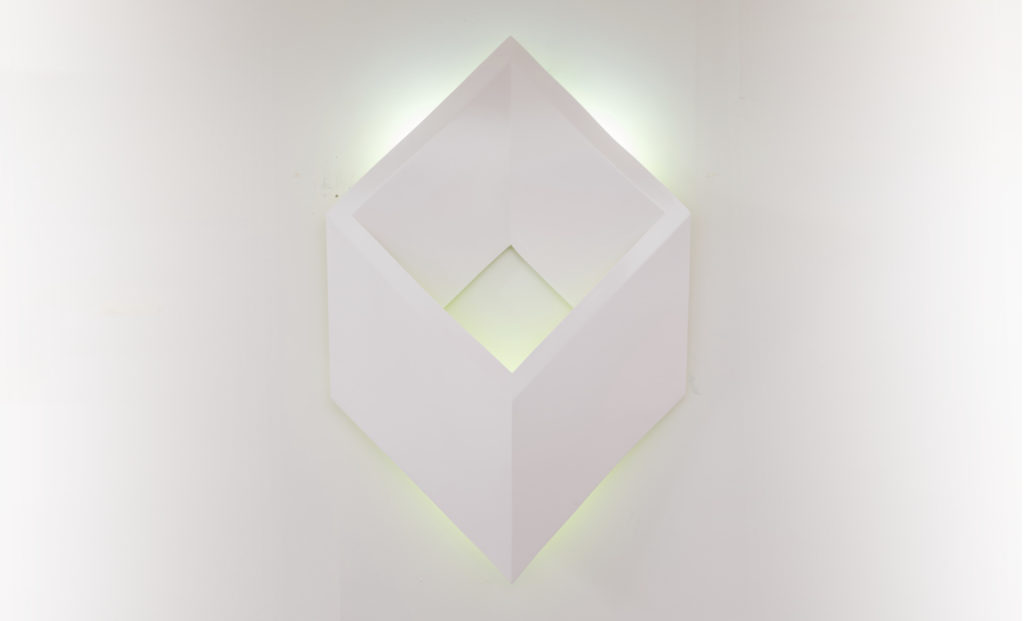
The important thing is just showing up every day. Between conscious effort, experimentation and luck, things start moving forward.
“I feel really challenged again and very much ‘in learning mode,’ which is a wonderful place to be”
What do you miss about your previous career?
Mostly the relationships. I had great personal connection with my clients, employees and suppliers, and although we often go out to lunch to catch up, the mutual problem solving and the gratification of a successful campaign is hard to replace. In large part, though, although I enjoyed both consulting and teaching, I think I achieved almost everything I set out to do. I feel really challenged again and very much ‘in learning mode,’ which is a wonderful place to be.
How did you prepare for the career shift?
I decided to have two locations. An office in the building where I had my business and a ‘studio’ where I could actually make things. This siloed separation keeps me focused. When I’m in the office, I’m doing the computer renderings and business stuff without distraction. In the studio, it’s all hands on. The most time consuming and important part was finding collaborators who could handle fabrication and finishing.
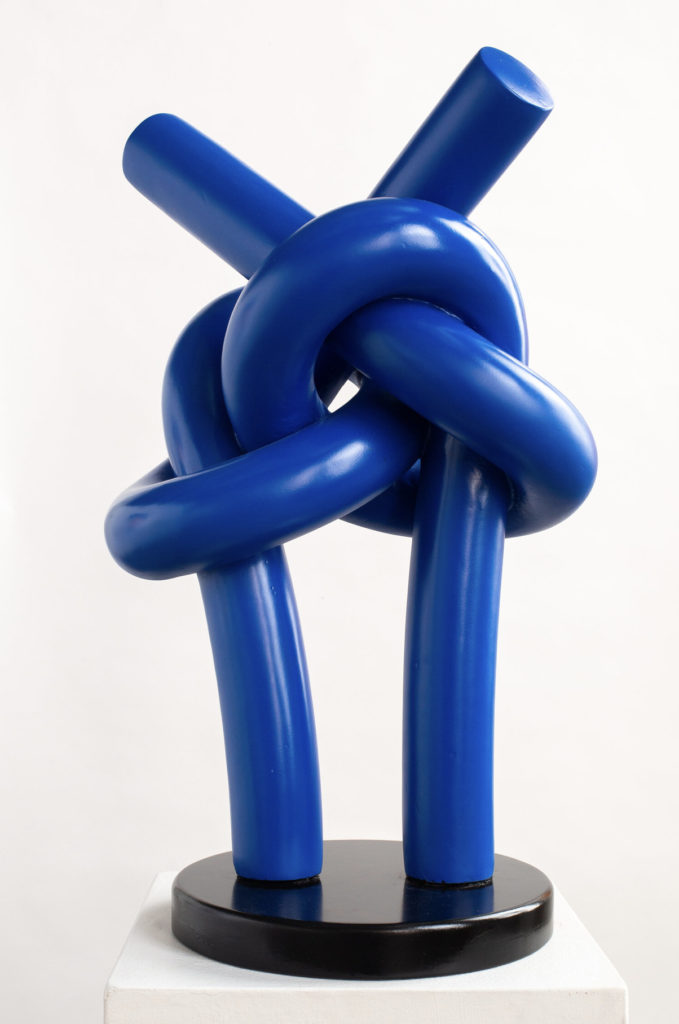
The other important aspect was networking. As I mentioned, I joined many artist groups to understand how the art world worked and, in the process, developed relationships that have propelled my career. Like any new adventure, the relationships ultimately are the fuel that drives success.
What was the hardest part about becoming an artist at 69?
Inexperience and unpredictable circumstances. By the time I decided to close my business, the gallery that did my first show had relocated to Harrisburg, PA, and a large venue that had planned to mount another solo show had declared bankruptcy. Another gallery in Pittsburgh offered to produce the exhibition concurrently with a solo show at the Harrisburg gallery. It seemed like it was coming together. Both shows opened on Friday, March 13, 2020, the day the Covid shutdown began. Both closed on Monday, March 15.
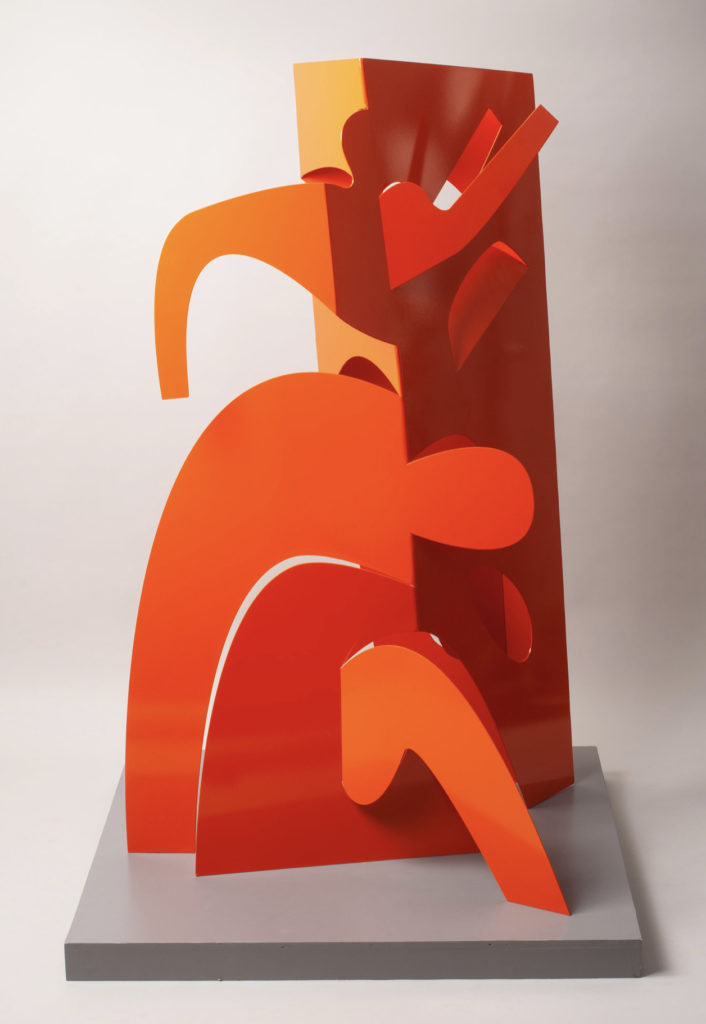
Public Sculptures
You’ve recently been commissioned to do several public projects, including a monumental 12-foot sculpture in downtown Pittsburgh. How did those come about?
My gallery (James Gallery in Pittsburgh) introduced me to a real estate developer who looked at my work and asked if I could develop an idea for their new project in the technology zone in Pittsburgh. I saw that it could be a good “gathering spot” because of its location, so I developed some sketches and a maquette of a sculpture called “The Gathering.” They loved the idea. In another case, a museum director in Los Angeles saw my rendering of this sculpture and asked if I could do a similar one in front of their museum. Both are due to be installed in May and hopefully will lead to more larger commissions.
What have you learned about yourself after reinventing your career?
I think of the Jack Benny (or was it Mark Twain?) quote, “Age is strictly a case of mind over matter. If you don’t mind, it doesn’t matter.” More seriously, reinventing (or inventing?) a new career brings a youthful vigor to every day. I’m loving every minute.
When you begin a new sculpture, where do you pull inspiration from?
The Little Prince, in Antoine de Saint-Exupéry’s book, said, “What is essential is invisible to the eye.” I began to understand this as a teenager, when I got interested in magic, which has two simultaneous realities: what observers see and what is “really” going on. What age teaches us is that what we’re observing is only part of the story and can even be illusory – camouflaging or misdirecting our attention away from important underlying information. My sculpture deals with similar issues. Suspension has qualities of levitation. Reflection and use of mirrors can warp one’s sense of how a space is configured. And certainly, what’s underneath or behind your viewing plane suggests that something important lurks behind the curtain. Metaphorically, the fact that our perceptions of reality are limited underscores the central challenge of art: changing the way we experience reality without completely abandoning it.
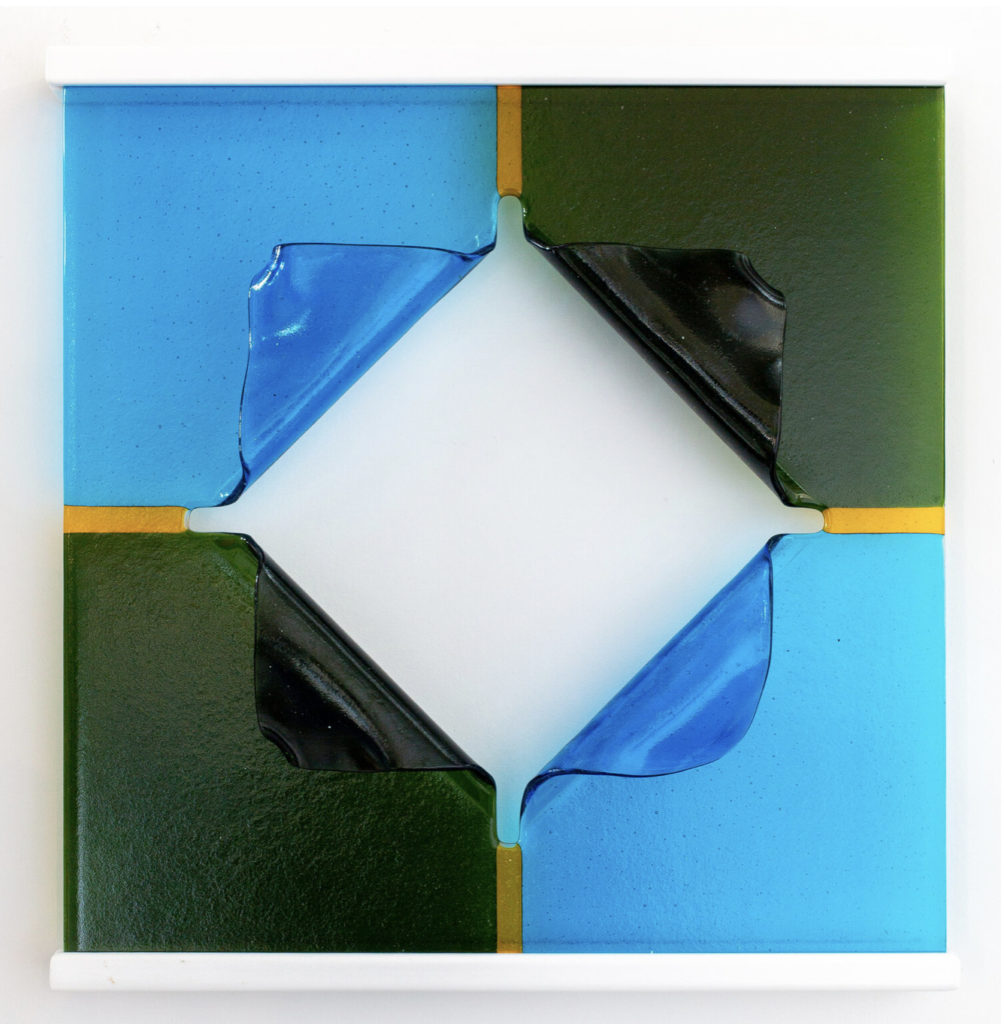
Creative Process
What is your creative process? Do you schedule your days?
I’m usually working on several sculptures at a time, at various stages of completion, and I use a variety of fabricators to execute many aspects of the production. I begin with sketches and maquettes (small models of sculpture) to work out the idea and formal characteristics, then prepare cutting specifications that I do on a computer that provide all the details the fabricators need. When material is being cut, I oversee the process and bring the forms back to my studio to form them into sculptures. I also collaborate with a lot of people who know more than I do about particularly specialized processes such as casting. For example, my cast glass and bronze pieces are made from an original sculpture that I produce using 3D printing, but the actual casting is done by an assistant that specializes in making molds and actually operating the kiln. I love collaborating with people (mostly younger than I) on the production. My scheduling is dependent on whether I’m actually making sculpture or preparing for an exhibition, which requires a good deal more structure and time sensitivity.
How do people react to your work?
One of the most rewarding parts of making art is the diverse reactions people have, particularly the differences in what they respond to. Many people tell me the sculptures make them feel happy, perhaps because most of my work incorporates bright colors and simple forms. A recent sculpture at the Pittsburgh International Airport, called “Family Portrait,” has created a bit of an unintentional effect, where families take selfies in front the sculpture. I’ve received more than 100 photos of people in front of the sculpture, many of whom I know, but many who see the sculpture and are taken by its theme and colorful, almost playful, forms.
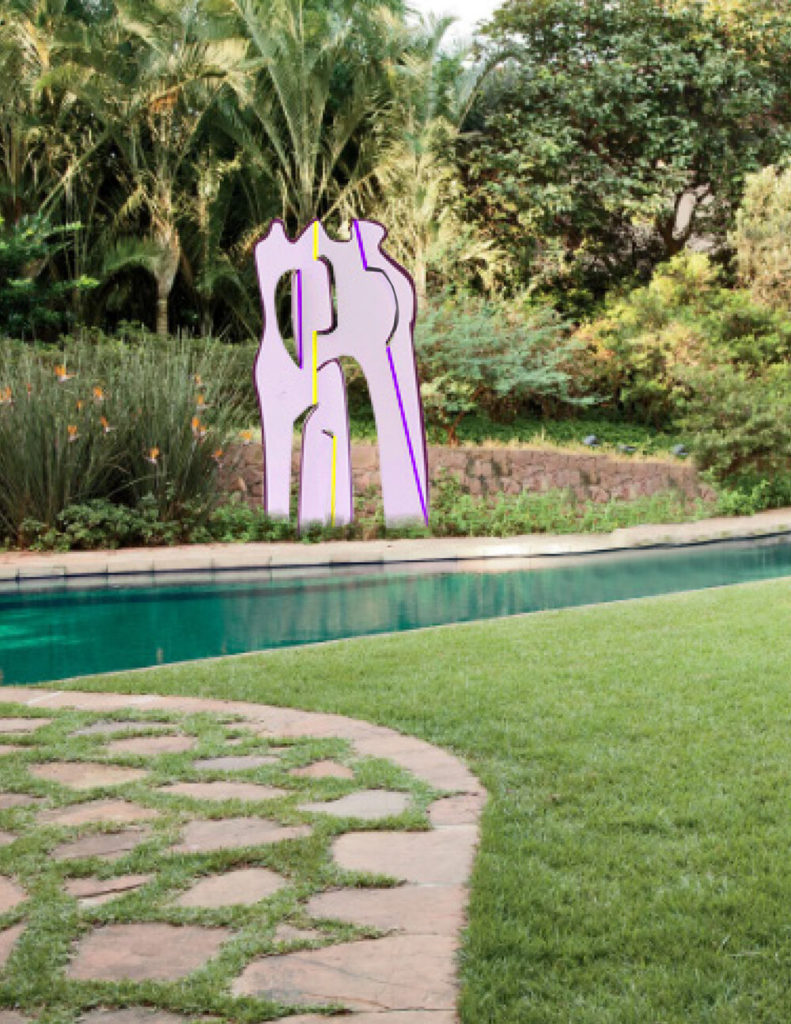
“I love it when people tell me that my sculptures make them feel happy”
How do you want people to feel when they are around your art?
I love it when people tell me that my sculptures make them feel happy. Perhaps because I tend to steer away from controversial themes or political statements, most of my pieces are quite accessible and convey a sense of my own joy.
Who is your biggest inspiration?
Although I’ve been influenced by many artists, my professor at Harvard College, Toshiro Katayama, was perhaps the most important inspiration. Although he died many years ago, he still has a profound effect on my outlook. He was Japanese but studied and worked in Germany during an important moment in design and art history and combined many traditional and innovative themes. He also integrated both design and sculpture in his career, which inspired me to make sculpture while practicing design, eventually leading to my complete career change.
What are the 3 non-negotiable things in your life today?
Although I’m not sure anything is entirely non-negotiable, there are a number of high priorities or principles that seem important, particularly at this stage of my life/career:
- Don’t work with anyone you don’t like.
- Make breakfast together with your grandchildren whenever they visit.
- Keep working.
What’s next for you?
Because large public art can impact so many more people than a sculpture in someone’s living room, I’m looking to expand my practice more in the public realm, working with developers to enhance their property and engage a wider audience. I’m looking forward to someday passing one of my sculptures in a public plaza and seeing people having lunch, taking selfies and otherwise gathering around art. That would be very gratifying.

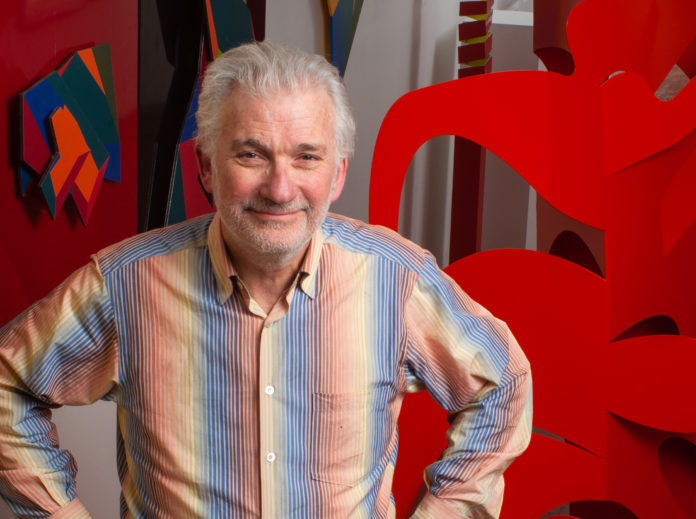

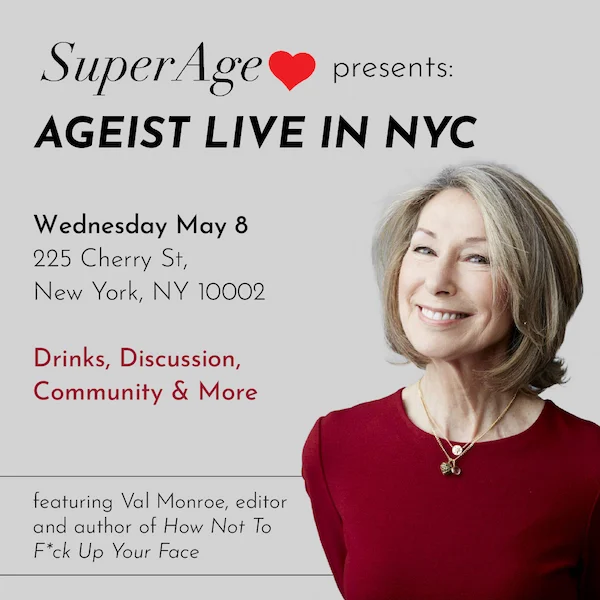
Great story, great accomplishment!
Your art and sculptures are amazing!
I am not a train artist but I love to do art, my art.
Inspiring story,quite parallel to my journey
Your work doesn’t just make me happy, it also makes me feel more alive and part of something bigger than myself. Thank you for your inspiring talent for taking simple forms and making them perform magic! Congratulations, Dan!
Love that your art makes people happy. It makes me happy, too. Fantastic work, Dan.